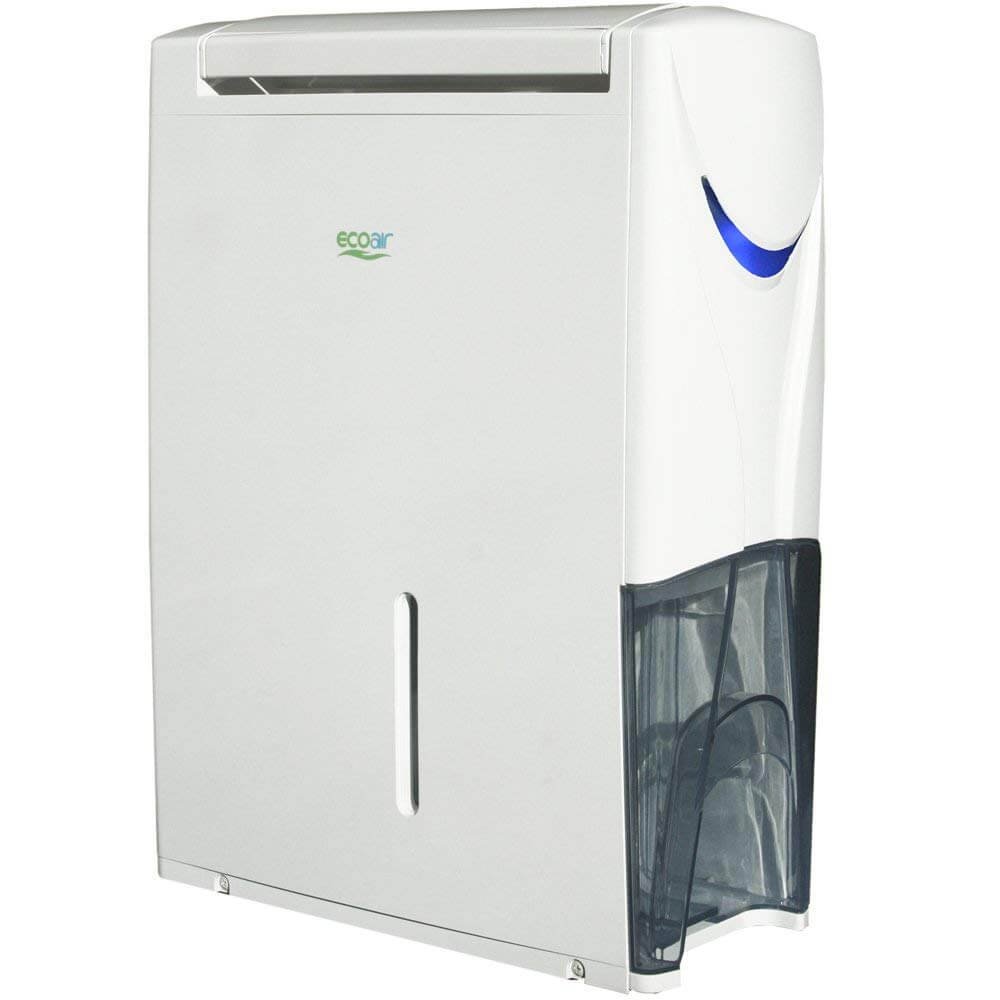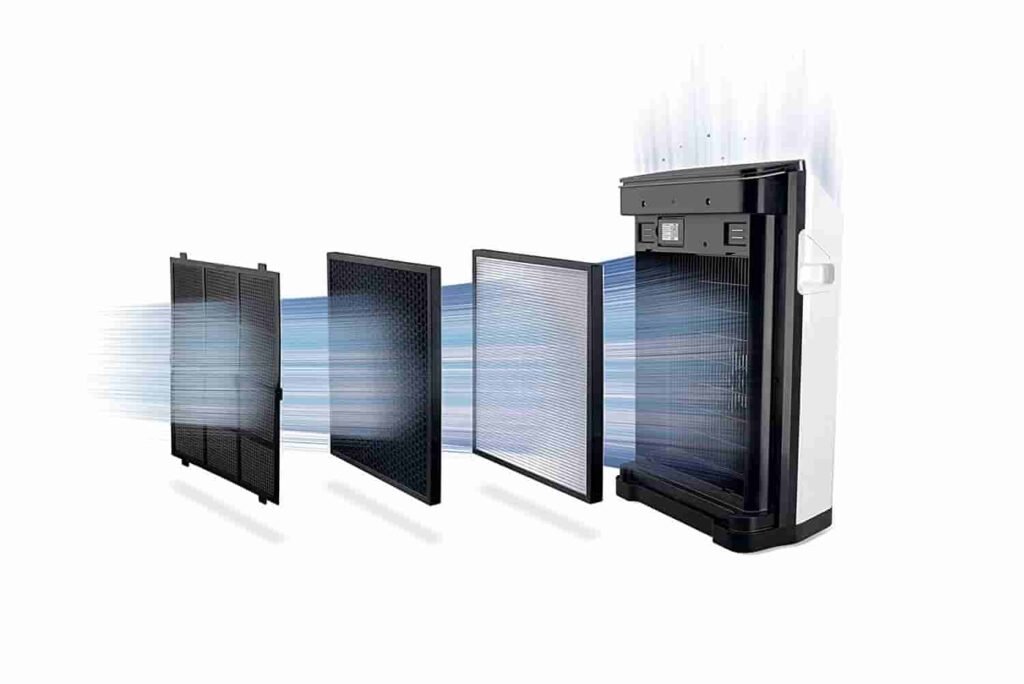
Mould can grow inside of our homes without us knowing and tend to grow awful mould spores in dark and damp places around our home, whether a leaky roof or your kitchen sink, these mould particles float around the air you breathe in and cause some serious side effects to your health.

It is studied that mould spores account for the majority presence of mould in a house and exposure to the mold spores in the air can cause an allergic reaction to some people who have mold allergies, which is why awful mold spores should be tackled straight away before they continue to grow.
Air purifiers can help with the filtration of mold spores from the air you breathe in with a long-life true HEPA filter to trap the fungi particles in the air, however, even though air purifiers might tackle the mold air quality issue, steps should be taken to prevent the actual growth.
That's why we have put together an extensive guide below that will give you all the knowledge you need for tackling a mold infestation in your household so as you can use an air purifier to breathe in the highest quality air possible with no spores present.
Before we can get into the nitty-gritty details about how to air purifiers for mould work, you need to understand more about the mould which is in your household, how it grows and the type of mould you have, as well as why you need to get rid of it.
Mould and mildew tend to be used interchangeably but refer to a different type of mold. Mildew tends to be visible mold growth which can appear on surfaces that get damp such as cloths and fabrics, this can be wiped off easily and the source of mold will disappear.
Mold itself is a fungus that comes in green or black patches a grows beneath the surface of a certain material, this mold is less visible and grows inside walls, for example, it is much harder to get rid of than mildew too and is responsible for the majority of mold spores in the air.

We have listed out the common types of household mold you might come across below which can affect indoor air quality, most of these mold types can be split up into three categories; toxigenic, pathogenic and allergenic.
Now you know more about mold and the types you will likely come across in the humid climate of your home, it's worth taking some time to understand how these levels of mold grow and why they can cause mold allergies in the air.
Mold reproduces through a term for mold called mold spores, which thrive on moisture and warm places, these mold particles are not visible in the air, which is why they are so dangerous if we inhale them over and over again.
Mold spores are always in the air and can't be prevented, but active mold growth will only happen if there are ideal conditions for it lives inside of your home in places such as our bathrooms are in our air conditioning units where it is always damp and contained.
A mold spore count will be higher too if there is food for it to digest where it is growing, whether this wooden places or other materials it can break down and eat, mold may go unnoticed for a long time if you experience effects of mold such as allergies or smell.

As mold coverage in your home is not always visible and the spores are airborne particles that you can't see, you might need to study your household for some common signs which indicate you have mold spores in your home.
We have bullet pointed some typical signs of mold growth in your home to look out for below -
So surely if mold is all around our house and airborne particles are containing it, the majority of mold is not dangerous, right?
Well, no, some people might be fine with mold spores in the air, while in others it can cause serious mold allergies and breathing issues over time.
We have listed out a few of the most common side effects people with mold sensitivity can have below.
All these negative health effects of mold are dependent on factors such as how much mold buildup is present in your home and how strong the persons immune system is.

Now we know all about mold and mildew in your home and how to spot it, let's look into how to clean the mold allergens from the air around us, as this is what causes breathing issues in the majority of people.
An air purifier can help you with mold prevention in the air as it traps particles as low as 0.3 microns in size, it does this through its HEPA filter, then blows clean air back into the room after it has been filtered from fungi particles and general bad air contaminants.
Although a HEPA air purifier can help you remove airborne chemicals and mold from the air, they do not stop mold growth itself, so this would need to be tackled first if you want to stop the reproduction of spores after you filter the air.
HEPA filters can remove 99.97% of bad particles such as mold in the air and the average size of mold fungi particles tend to be around five microns in size, which is big enough for an air purifier to catch and remove.
To help remove mold from the air with your air purifier you can place in areas where mold is likely to be present such as in your kitchen or bathroom where a lot of moisture is around and mold is common to settle.
A HEPA air purifier for mold will trap the microscopic fungi spores in the air through their net, they will never be able to get rid of all mold spores in the air but can keep numbers low to stop side effects of mold being present.
Your air purifier works best after you have done an initial cleanup of mold in your house as this is when more mold spores will be floating around the air ready to be caught, once your HEPA filter is full it will need to be changed however for it to keep working effectively and trapping mold spores.

As we mentioned above, you should use a HEPA filter to trap mold spores in the air, but you can also find some great air purifier add ons that will give you complete air purification technology of mold.
You might be wondering if an air purifier with a HEPA filter can only remove mold spores in the air, and the answer to that is no, having a HEPA filter can remove a lot of other bad chemicals in the air which you might not have considered, we have listed a few below.
As said earlier in our article, mold can be removed from the air by your air purifier, but the growth cannot be stopped until you clean the mold issue itself and spores will continue to reproduce and circulate through the air.

Luckily, there are some ways and tips you can implement to prevent mold from growing in your home in the first place which can improve the air quality of your house too.
How long will mold spores stay in the air after cleaning?
Mold spores will remain more active in the air 24-48 hours after cleaning, this is the best time to use your air purifier to trap the spores floating around in the air, you should also ensure that the house is ventilated well after cleaning too.
Can mold dry out if there is no moisture?
Mold will dry out and become inactive over time if there is no moisture, but this does mean the mold is gone entirley and can become reactivated and grow again if the area where it is becomes moist once more.
Is it possible for mold in walls to make you sick?
Yes, even if you do not have allergies to mold then the mold in the walls around you have the potential to give you allergy symptoms such as itchy eyes, a runny nose and consistent coughing.
If you have a musty smell in the air around your home or you notice that your allergies are worse when you spend time inside, then you could well have mold behind your walls which you don't know about, look for signs of discolouration to be sure.
Can black mold kill you?
Black mold is unlikely to kill you but can cause serious respiratory problems in people after being exposed, especially in younger children or adults. Some common symptoms of black mould exposure could be itchy eyes and coughing.
Are dehumidifiers better for mold than air purifiers?
Dehumidifiers are great for getting rid of mold as they make the environment less pleasant for it, however, they do not remove mold spores from the air like purifiers, so both can be used together to fight mold after initial removal.
Should I wear a mask when cleaning mold?
You should always wear a mask if you are doing a deep cleaning of mold to prevent inhaling it and causing respiratory issues, it's a good idea to wear gloves too when touching mould to prevent skin irritation from occurring.
Overall, air purifiers work for mold removal in the air if you get a purifier that has a HEPA filter to trap the spores and stop them from reproducing, you can use this in conjunction with a carbon filter to remove the mold musty smell from your household too.
It should be noted, however, that HEPA air purifiers alone will not be successful in removing mold altogether, you should get to the source of the mold first, whether it is a leak or behind your wall and deal it will before using a purifier to help control the spores in the air which could be making you sick, you can use a humidifier too so as you can dry out the air and make it less habitual for mold to thrive.
Warning: Undefined array key "preview" in /home/u198566027/domains/bestairpurifiers.uk/public_html/wp-content/plugins/oxygen/component-framework/components/classes/comments-list.class.php on line 102